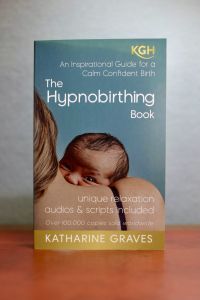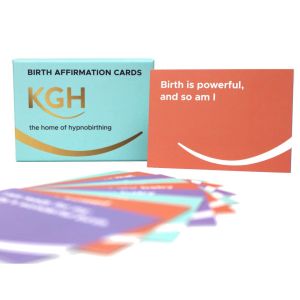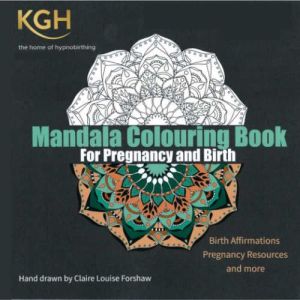
Your report on induction shared inaccurate statistics and is unnecessary scaremongering.
I was very interested to hear that you were going to discuss induction of labour on your show. This is an area that has such a huge impact on women and their birth outcomes and something we look at in detail on a KGHypnobirthing course: looking at the facts so women can make informed decisions.
However it was with a sinking heart that I listened to Sarah Jarvis share outdated and inaccurate statistics for the stillbirth rate.
Induction of Labour for Medical Reasons
Dr Jarvis ran through a number of medical reasons why induction should be performed for medical reasons. This can be a very valuable part of the care for mums-to-be who need that support, and we are very lucky to have the skilled medical professionals providing this care.
Induction of Labour for Post Due Dates
This is the area I wish to contest your report.
Women are often offered (some pressurised) into induction after ’40 weeks’. These due dates themselves are non-scientific, please see further information below.
It is easy to scare a heavily pregnant women into having an induction.
Dr Jarvis did just that when she stated that the rate of still birth is 1:1000 at 42 weeks and at 43 weeks this doubles and goes to 1:500. She said “there is a real risk to the baby if you go over 42 weeks”.
These statistics are WRONG!
In fact, the latest details from MBRRACE have shown that the stillbirth rate decreases after 42 weeks:*
- At weeks 37 to 41 (+6) the risk of a stillbirth is 1.52 per 1000 births
- At 42 weeks onwards the risk of stillbirth is 1.04 per 1000 births
- Stillbirth rate declines progressively throughout a women’s pregnancy
What Dr Jarvis shared is scaremongering.
If this is then presented in relative terms (anecdotal reporting supports that this is happening) with a medical professional stating “your risk of stillbirth goes up by 50% at 43 weeks compared to 42 weeks”, what right minded mum-to-be would not agree to induction?
The Risks of Induction
Presenting both sides of the story should always be your job. At no point in your report did you mention the knock-on effects of having an induction. It should not be taken lightly as an induced labour can often follow with the ‘cascade of (medical) interventions’. You can read more about induction here.
Every intervention has risks and benefits. To make an informed choice women need to know the risks and benefits of performing the intervention, and the risks and benefits of continuing the pregnancy naturally. If she has only been told the risks of continuing the pregnancy and the benefits of induction of labour she only has half a picture and cannot make an informed choice.
Induction Rates Increases, Medical Pressure and Guidelines
You shared some of the reasons why the huge rise in induction has occurred in recent years. Whilst we do not have scientific evidence to support this, and I would be very interested if anyone can point me in the direction of a study, what we do have is overwhelming anecdotal evidence demonstrating that women are being heavily pressurised and often routinely induced (for no medical reason) as early as 40 weeks.
Why could this be the case?
- Spread of misinformation about stillbirth rates, similar to your own incorrect reporting.
- Medical professionals, working from out-of-date statistics
- Women, scared by these facts, pushing for induction.
- Medical professionals, working within intensively pressurised environments and pushing for what they believe are ‘risk-averse’ solutions.
- Often women do not understand the implications of agreeing to an induction.
I must also state again, at this point, that our medical professionals, who do a truly amazing job of looking after us and offer life-saving support for many women during childbirth are not to blame. They are wonderful people doing their best in a bureaucratic system.
Since your radio show I have been fielding enquiries from worried mums-to-be. This is very stressful for them and can have a very real negative knock-on effect on labour itself due to the inhibition of oxytocin. Being calm, confident and having the support and knowledge to make the best decisions for themselves and their baby, is one of the key areas supporting a positive birth outcome.
I would welcome continuing this discussion with both yourself and Dr Jarvis.
References:
Mittendorf et al 1990: www.ncbi.nlm.nih.gov
MBRRACE-UK Perinatal Death for Birth from Jan to Dec 2016: www.npeu.ox.ac.uk
Further Information:
Why your due date is a fallacy
Inductions are routinely performed because women are overdue. Yet there is no science to support the due dates used by the medical profession:
- 40 weeks is an arbitrary time period established by a German obstetrician (Naegele’s Rule) in the early 1800’s and is not evidence based. Recent research (Mittendorf R et al 1990*) demonstrates that pregnancy in first-time Mums lasted on average 8 days longer than Naegele’s rule.
- Inaccuracies also occur as every women’s menstrual cycle differs, and often vary month to month.
Further details about due dates can be found here.









